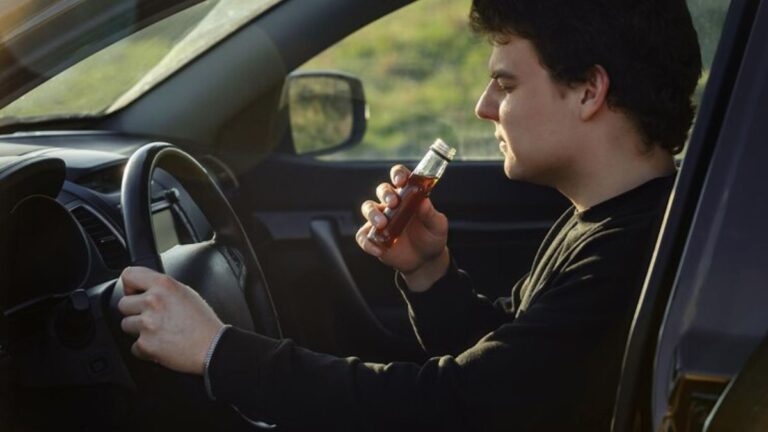The Dangers of Drunk Driving
Drunk driving remains one of the leading causes of roadway accidents and fatalities. It has been reported that several cities, including Denver, face significant challenges, with reports indicating a 60% increase from three years earlier in the number of drunk driving incidents. The CDC underscores the gravity of the situation, indicating that, on average, 29 people die every day in the United States due to drunk driving crashes. Understanding these risks is the first step towards creating safer roads.
Drunk driving not only endangers the life of the driver but also poses a significant risk to other road users. Impairment from alcohol affects reaction times, coordination, and decision-making abilities, leading to an increased likelihood of accidents. The ripple effect of these tragedies extends beyond the immediate victims, impacting families, friends, and entire communities. For example, one crash can leave a lasting emotional and financial toll on families, burden the healthcare system, and lead to economic losses for businesses.
Preventative Measures to Reduce Drunk Driving
Various preventative measures have proven effective in combating drunk driving. Sobriety checkpoints, for example, can serve as a deterrent, reminding drivers of the legal consequences and increasing the risk of getting caught. Mandatory ignition interlock devices, which require a breathalyzer test before starting a vehicle, are another successful strategy. Public awareness campaigns like in Denver also play a crucial role in educating the public about the dangers associated with drunk driving.
Collaboration with local communities to promote designated driver programs and offering alternative transportation options, such as subsidized ride-sharing services, can further reduce drunk driving incidents. Support from organizations like MADD (Mothers Against Drunk Driving) is invaluable in pushing for these preventative measures and encouraging safer driving behaviors. Such organizations often provide educational resources and victim support and advocate for stricter DUI laws, amplifying their impact.
Community Education and Awareness
Community education is key to altering social norms around drinking and driving. Schools, workplaces, and local organizations can host seminars and workshops to spread awareness about the consequences of drunk driving. Informing the public through community newsletters, social media campaigns, and local media ensures this critical information reaches a broader audience.
School Programs
Incorporating education on drunk driving into school curricula can help young individuals understand the risks associated with alcohol from an early age. Interactive sessions, real-life stories, and engaging discussions can make these programs more impactful. Programs like mock DUI trials and testimonial presentations from affected families can resonate deeply with students, fostering a personal commitment to safe driving practices.
Workplace Seminars
Workplaces can also contribute by organizing seminars and providing resources on safe driving practices. These seminars can highlight the legal, financial, and professional repercussions of DUIs, emphasizing the importance of responsible behavior even after work hours. Company policies that encourage the use of ride-sharing services or incentivize the use of designated drivers during corporate events can reinforce this message.
The Role of Law Enforcement
Law enforcement agencies are pivotal in mitigating the risks associated with drunk driving. Enhanced patrolling during peak hours, regular sobriety tests, and strict penalties for offenders help deter potential drunk drivers. Police departments can also collaborate with community leaders to develop comprehensive strategies to reduce DUI incidents.
Regular training for law enforcement personnel ensures they are well-equipped to handle DUI cases effectively. Utilizing advanced technologies such as breathalyzers, dashboard cameras, and automated license plate readers can aid in accurately identifying and prosecuting offenders. Additionally, conducting random sobriety checkpoints can act as a strong deterrent against drunk driving.
Technology and Innovations in Reducing Drunk Driving
Advancements in technology offer new solutions to minimize drunk driving. Innovations such as ignition interlock devices, smartphone applications for ride-hailing services, and vehicle-assisted technologies are transforming how communities address this issue. Continuous research and development are crucial for introducing more efficient preventative tools.
Ignition Interlock Devices
Modern ignition interlock devices are more effective and user-friendly than their predecessors. They are now equipped with features like real-time monitoring, data logging, and tamper detection, ensuring that individuals with prior offenses cannot drive under the influence. Studies have shown that these devices can significantly reduce repeat offenses during and after their installation in offenders’ vehicles.
Ride-Hailing Apps
Applications like Uber and Lyft have made finding a safe ride home easier than ever. Encouraging their use, especially during late-night hours and in areas with higher rates of DUI incidents, can significantly reduce the likelihood of drunk driving incidents. Partnering with these companies to offer discounts or subsidies for rides could incentivize even more people to opt for a safer alternative to driving under the influence.
Steps You Can Take Today
Everyone has a role to play in ensuring safer roads. If you plan to drink, arrange for a sober ride home in advance. Advocate for stronger DUI laws in your area or participate in local campaigns to reduce drunk driving. We can collectively tackle this issue more effectively by supporting community education initiatives and embracing technology. Together, through proactive steps and community involvement, we can make a significant impact and save countless lives.
